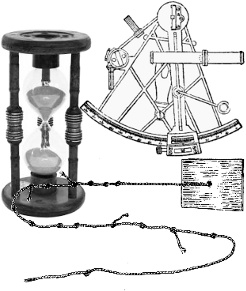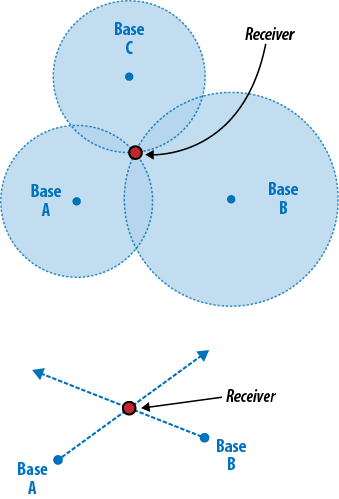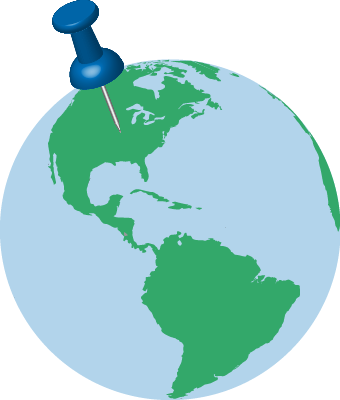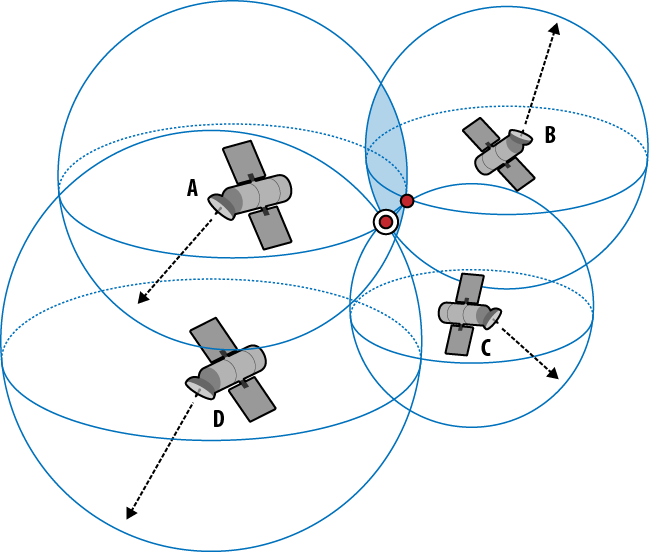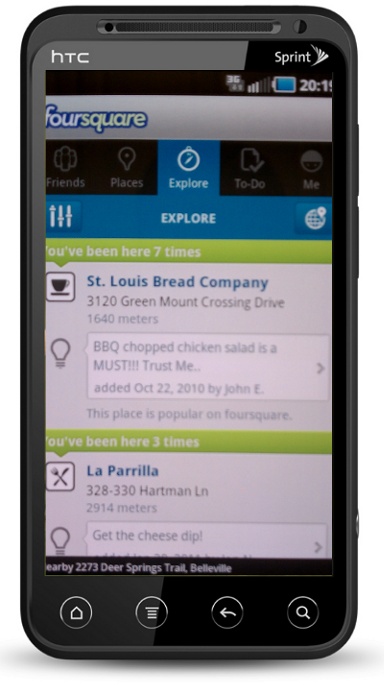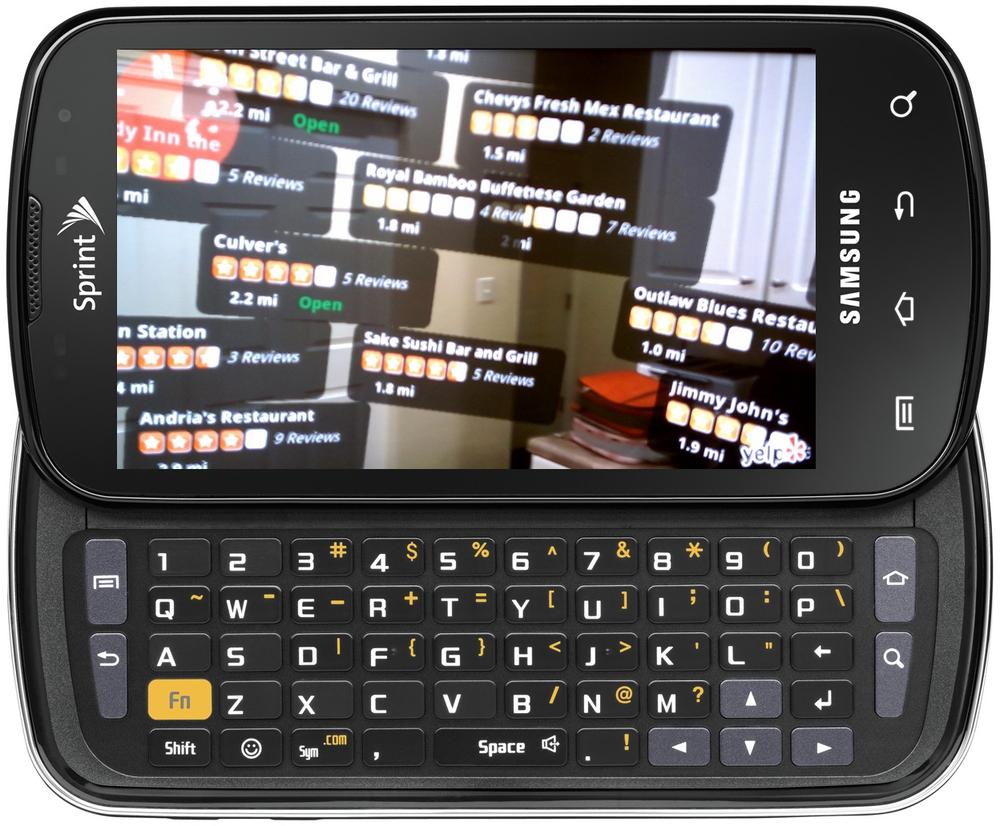Chapter 1. Finding Our Way
As long as people have been traveling from one place to another on Earth, they have used a variety of methods, with varying degrees of accuracy, to calculate approximately where they are located at any given time. As our technologies have improved, so has our ability to detect our position accurately. The term geolocation is best described as the determination of the geographic position of a person, place, or thing. In our modern era this involves the use of Internet-enabled devices (computers, routers, tablets, etc.), smartphones, or GPS-based systems.
Geolocation in the Past
While now it is easy and convenient to identify our position using devices with built-in GPS capabilities, it has not always been the case. Over the millennia people have come up with many inventive solutions to calculate where they were, which is the essence of geolocation—figuring out your real-world geographic location with available technology.
Location B.C.E.
Thousands of years ago, people relied on visual forms of geolocation to help in orienting where they were in a given area. One of the earliest forms of visual location documented in history was the smoke signal. Recorded evidence indicates that ancient Chinese, Greeks, and Native Americans used smoke signals to aid navigation and to communicate over great distances (as far as the eye can see). Smoke signals assisted the navigator by providing a better frame of reference to similarly shaped terrain, and would also give a rough approximation of distance from the signal. These indications would be helpful to hunting parties and other expeditions in finding their way back home.
As human cultures advanced, so did our understanding of mathematics and nature. Ancient seafarers discovered the position of the sun and stars in relation to the Earth, and calculated how to use the angles of certain “fixed” stars, like the Pole Star (otherwise known as the North Star) in their navigational calculations. Civilizations like the Greeks, Phoenicians, Norse, Persians, and Chinese all used the stars to assist in navigating the seas, developing tools, like those discussed further later, which allowed them to venture out past the sight of land. The ability to venture farther and farther from their homes led to the discovery of new lands and the spread of their respective civilizations.
Technology with Exploration
Navigation of the oceans and seas during the Middle Ages onward was primarily for trade with other parts of the world, though exploration began to play a larger and larger role starting in the 15th century. Sailing farther distances across vast bodies of water was made possible by better tools to help in the location of ships as they moved through trackless waters.
The Arab Empire made vast contributions to navigation early in the Middle Ages while it was one of the major economic powers for over six centuries. This was accomplished in large part because of those people’s ability to travel not only the river trade routes, but the oceans as well. The primary tools employed by the Arabs on their ships were a magnetic compass and an instrument known as a kamal, pictured in Figure 1-1. The kamal was a navigation device that aided in the determination of latitude. Used first by Arab sailors, this technology eventually spread to Indian and Chinese navigators as well. The kamal consisted of a rectangular piece of wood to which a string with several equally spaced knots would be attached through a hole in the middle.[2] The angle of the wooden card, slid along the string until aligned to a fixed star, such as the North Star, could then be measured by counting the number of knots from the end of the string to the card.
The magnetic compass used on ships during this time period used the same basic principles as a compass does today. A magnetized pointer swiveled on a pin to align itself with Earth’s magnetic field. The combination of the compass and kamal allowed seafarers to calculate headings and rough latitudes in seas nearer to the equator.
As the centuries passed, the sailors of Europe began to venture farther out to sea. They had been introduced to the navigational tools of the Arab sailors, but found that the kamal, in particular, did not work very well at the higher latitudes where the Europeans sailed. For these latitudes they needed more complex devices to calculate the angles of the sun and stars. The first device developed was the cross-staff, also known as a Jacob’s staff at that time. It functioned using the same basic principles as the kamal, except it was made of two longer pieces of wood shaped like a cross. It was eventually replaced by more precise instruments, namely the sea astrolabe and the quadrant.
The astrolabe was a graduated circle used to measure vertical angles at the sun’s declination, or the declination of a fixed star. These astrolabes were built specifically for boats and meant to withstand rough seas and wind. At about this same time, navigators had begun using the quadrant as a supplement for the astrolabe in many cases, also used to measure angles, but by measuring the projection of the shadow cast by a body like the sun. The quadrant began as a simple pole and attached arc, but evolved over time to a more complicated device with multiple poles and arcs, such as the Davis quadrant.
All of the devices to this point in history were meant to measure the latitude of a ship in the ocean, but there was no good method for calculating the longitude of the ship. Without an accurate means of calculating time and the speed at which a ship is traveling, calculating the longitude of a vessel is nearly impossible. Absent true clocks to use on their voyages, explorers began experimenting with water clocks and sand clocks—an hourglass was one such clock. Hourglasses were used until the accuracy of more modern watches, or chronometers, became available in the late 1700s.
Now able to calculate longitude with some certainty, navigators continued to search for more accurate ways to calculate a ship’s latitude as it sailed the oceans. The octant, and finally the sextant, were the replacements for the quadrant and astrolabe. See Figure 1-1 for an example. A sextant measures the angle between two visible objects, and on a ship was used to measure the angle between the sun or fixed star and the horizon. To this day, the sextant is considered a viable backup navigation tool to modern GPS and radio systems as it does not require electricity.[3]
Location in the 1900s
By the beginning of the 20th century, radios were used on ships to check the accuracy of the ship’s chronometer and for determining direction (while also being used for communication, of course). This is accomplished by calculating a path based upon the direction that the signal was received from some source transmission, known as Direction finding (DF). This does not have to be a radio transmission, necessarily, as any wireless device will work as long as the object attempting DF can receive the signal. When the direction information from two or more receivers is combined, the location of the transmission can be determined through a calculation known as triangulation. Triangulation is the process of measuring the distance (either radial distance or directional distance) of a received signal using two or more unique transmitters. Figure 1-2 illustrates methods of triangulating a location based on both radial and directional distances. The first diagram shows a device being triangulated using the radial distance of three transmitters, while the second diagram shows a device being triangulated using the directional distance of two transmitters.
In 1957 the Soviet Union launched the first man-made satellite, Sputnik, into orbit—sparking the idea of a satellite navigation system. Scientists in the United States discovered that they could monitor Sputnik’s radio transmissions, and that because of the Doppler effect, the signal from Sputnik grew higher in frequency as the satellite got nearer to their observation posts and lower as it moved away. Using Doppler distortion, scientists realized they could tell exactly where the satellite was in its orbit at any given time.
Note
The Doppler Effect was first discovered by Austrian physicist Christian Doppler. It describes the shift in the frequency of sound waves toward and away from an observer. A good example is the sound of the sirens on an ambulance—as the ambulance approaches, the sirens get louder (compressed waves), while the siren grows steadily softer as the ambulance speeds away (stretched waves). If you could measure the rate of change of pitch, you could also estimate the ambulance’s speed.[4]
Over the course of the next few decades, the United States military launched a series of satellites into orbit. Some examples of these navigational satellite projects are Transit, Timation, Project 621B, and SECOR. Each project built upon lessons learned from the previous one, until the U.S. military created the Defense Navigation Satellite System (DNSS). In late 1973, DNSS was renamed Navstar. It was this system that created the basis for the GPS that we know and use today.
Public Availability of GPS
The Navstar system was originally built as a strictly military system, with no access for the civilian community. That all changed in 1983 when Korean Air Lines Flight 007 was shot down over the East Sea by the Soviet Union, killing all 269 passengers and crew. In an unfortunate set of circumstances, the flight had strayed into Soviet airspace at around the same time the Soviets had planned a missile test—claiming it was on a spy mission, Soviet interceptors shot it down. As a result, President Ronald Reagan issued a directive to the U.S. military to make the developing Global Positioning System (GPS) available for civilian use so that events like Flight 007 could be avoided in the future. 24 satellites would eventually be launched for this GPS array, with the first one launched in 1989 and the final one in 1994.
When it was first launched, the best quality signals were reserved for military use, while the signals that were made available to the public were intentionally degraded in what was to be known as Selective Availability (SA). President Bill Clinton changed this when he ordered Selective Availability to be turned off—this was done at midnight on May 1, 2000. With the removal of Selective Availability, the precision of publicly available GPS went from approximately 100 meters to 20 meters.
Geolocation Now
Since 1978, 59 GPS satellites have successfully been placed in orbit around the Earth, although as of 2010, only 30 of those satellites were still considered healthy. The United States plans to launch more GPS satellites into orbit over the next several years and has also entered into a cooperative agreement with the European Union for use of their Galileo satellite navigation system (due to be operational in 2014).
As you can see, our ability to precisely determine our location has come a long way from the days of the smoke signal. GPS has made precision possible, and is the present and future of navigational systems on Earth. Now that you have some background on how we can locate ourselves using today’s technology, let us explore what geolocation is all about.
The Basics
If you picture a map of the world, your position is a single point on that map, as shown in Figure 1-3. This point is comprised of two components, latitude and longitude, that informs GPS software where you are. Once pinpointed, this information can be used by a GPS program to get more information for the user, such as nearby businesses, traffic jams, or other people. Since it has a point, the application will use a process of reverse geocoding to get this information about the area around the user.
Note
Geocoding is the method of identifying the geographic coordinates associated with textual location information like street address or postal code. Reverse geocoding is essentially the opposite process—using associated textual location information based on a geographic coordinate.
Of course, the position does not necessarily have to come from a GPS system. The information used and how the device processes and parses location information is based upon the type of device being used.
Ways to Locate
There are many methods for modern computing devices to gain location information, and not all of them rely on GPS satellites to do so. The following is a list of many of the ways location is processed:
Global Positioning System (GPS)
IP Address
GSM/CDMA Cell IDs
WiFi and Bluetooth MAC Address
User Input
GPS can be used on any modern mobile phones that are GPS-capable as well as on GPS-specific devices. IP Address location usage is also available for any device that is connected to a network or the Internet—desktops, printers, routers, etc. GSM/CDMA Cell IDs are used by cell phone carriers around the world. WiFi and Bluetooth MAC Address location usage is available on devices that use wireless technologies. User Input is available on any device and is software on a device requesting location, things like zip code, from the user via some input method, typically a textbox.
Global Positioning System (GPS)
GPS satellites continuously transmit information that GPS-enabled devices or receivers can parse, for example: the general health of the GPS array, roughly where all of the satellites are in orbit, information on the precise orbit or path of the transmitting satellite, and the time of the transmission. The receiver calculates its own position by timing the signals sent by any of the satellites in the array that are visible.
Note
A great illustration of satellite visibility from a point on Earth can be found at http://en.wikipedia.org/wiki/File:ConstellationGPS.gif.
The receiver determines the time it takes to receive each message and then calculates the distance to each satellite based on this information. The distance of each satellite from the receiver, their current orbit, and the trilateration calculations inform the receiver of its own current position. While in radio triangulation three transmitters are enough to determine a reasonable location, there is the factor of time to be considered with orbiting satellites. It takes time, perhaps a few seconds, for a satellite signal to reach the Earth—any small clock error in a satellite, multiplied by this time, can create large positioning errors. Use of a fourth satellite removes the error from the equation (see Figure 1-4). In most cases, therefore, a receiver will use four or more satellites to calculate its position. This is not strictly necessary in cases when the receiver already has a known altitude (in the case of some fixed receivers, for example).
IP Address
An IP (Internet Protocol) Address is a unique
number assigned to any device connected to the Internet that allows it
to communicate with other devices. This number may be thought of in the
same way as a home address. Each of our homes has a unique address
assigned to it that allows for mail to be received, take-out to be
delivered, or emergency services to be directed to it. The IP address
assigned to a device when it connects to the Internet allows it to send
data out to other devices and receive responses back from them. Although
our homes receive addresses that are more or less permanent, an IP
address may be either static (permanent) or
dynamic (temporary). Regardless of the type of
address a device has, it will always consist of four number sets
separated by periods, like this: 123.123.123.123.
In most cases, an IP address is assigned to an Internet Service Provider (ISP) within blocks that are based on region by a local registry institution. Because of this, the country, region, and even city are generally easy to identify for a given IP address. Furthermore, with recent advances in data collected and maintained by ISPs, the device’s geographical location can frequently be pinpointed to within a few meters of its actual location (see Location and Location-Based Services (LBS)). The biggest challenge facing someone who wants geolocation information from an IP address is that there are hundreds of these regional institutes that would need to be queried in order to gain the data—an impractical prospect.
Warning
Though the geolocation found from a device’s IP address has gotten much more accurate in recent years, it can still be misleading or off by miles. The location returned could be the location of the ISP itself, a proxy server, firewall, or any other device that passes data to the device in question, which could be physically far removed from the given position. The accuracy of the returned data will be covered in detail in Chapter 3.
Companies specializing in collecting worldwide IP address range information and consolidating it into searchable databases emerged to fill the need for quick geolocation queries. It has taken several years to accomplish, but a location identified through these companies from a device’s IP address has a high level of accuracy these days. Free and pay-for-use service companies exist that provide IP address geolocation databases and APIs to access their data—IPInfoDB, Geobytes, GeoLite City/Country from MaxMind, and Quova to name just a few. The Geolocation API gathers a position (see Latitude and Longitude) from a user’s IP address without the developer needing to make a call to one of these databases, though as we will see, these companies provide a great deal of additional information about the user’s location that the API does not expose.
GSM/CDMA Cell IDs
A Cell ID is the unique number that identifies each mobile device in a particular cell network, much like an IP Address identifies a device on a network. The two most popular networks available are Global System for Mobile Communications (GSM) and Code Division Multiple Access (CDMA). The type of cell service you require is based on the area you are attempting to gain coverage in.
GSM is the oldest of the mobile service technologies, and therefore enjoys a certain robustness over other technologies available in the market. GSM is a 2G technology that is available in over 200 countries, and recent data suggests it is used by over 75% of the world’s mobile users. The availability of GSM to migrate to 3G and 4G services (Evolved High Speed Packet Access (HSPA+), Long Term Evolution (LTE), and Service Architecture Evolution (SAE)) is also very straightforward, making it the standard in use by nearly four billion customers. Though GSM technologies cannot hold the same amount of data as other technologies, it does have a high quality level due to the ability to place repeaters inside and outside of buildings where reception would otherwise diminish. This makes it a good carrier with less service interruption.
CDMA is a newer technology than GSM, and comes in both 2G (cdmaOne(TM)) and 3G (CDMA2000(R) and WCDMA) types of service. The advantage of CDMA technology is that it allows many users to occupy the same time and frequency portions in a given band, something that GSM cannot do. CDMA networks, like GSM, are also migrating to LTE technologies to support the growing demand for 4G networks.
Regardless of what type of technology the mobile device is using, the basic principle of having a unique identifier on the network is what really matters. Using triangulation, the Cell ID’s latitude and longitude can be identified, allowing it to be geolocated. The more towers that are used to triangulate the position of the mobile device, the more accurate the location will be. This is why geolocation that relies on this type of technology works better in urban environments—where there are more towers in closer proximity to one another—than in rural areas.
Note
In the United States, with the advent of Enhanced 9-1-1 (E911) services, the Federal Communications Commission (FCC) mandated that all carriers must meet a minimum of 95% of all handsets resolving their position to within 300 meters. This mandate has considerably improved the geolocation capabilities of mobile devices on cell networks.
WiFi and Bluetooth MAC Address
WiFi and Bluetooth MAC Addresses work in a
similar fashion to IP addresses on a device. The Media Access Control
(MAC) address is a unique number assigned to the interface, usually by
the manufacturer of the interface card. This number was intended to be a
permanent and globally unique identifier, however more modern hardware
allows for the address to be manually changed; this is a practice known
as MAC spoofing. A typical MAC address will look
something like this: 12-34-56-78-9A-BC.
The MAC address for a WiFi router is simply the address found on the interface for the wireless device. In the same way, the MAC address for a Bluetooth device is the address found on its interface. Using this address in a similar manner as an IP address, a latitude and longitude, and thus a physical location, can be obtained.
Location and Location-Based Services (LBS)
Your location, or position, is a point in physical space designated by the latitude and longitude that a device occupies on the Earth’s surface. The surface of the Earth, however, is not flat. A location will have other information associated with it, as we will see in Chapter 2, that will help pinpoint the exact space on the surface.
Other information can also be retrieved as part of a location—information that is more readily consumable by people. This information includes country, region or state, city, postal code, street address, timezone, domain name, Internet Service Provider (ISP), language, company name, and connection speed. What information corresponds to or is available with a latitude and longitude depends on the method used to retrieve the location (GPS, IP Address, etc.).
A location-based service (LBS) is usually a service running on a mobile device that provides facts or recreational information. It employs geolocation to make the facts or entertainment more personal to the user of the application. An example of a typical location-based service is one that identifies the location of a device and then discovers the location of restaurants in the immediate vicinity of that location. As location-based services become more common, their commercial value will become more readily evident to corporations, who can use them to personalize users’ experiences with location-aware weather, coupons, and advertising. This is already becoming more common, and will only continue to grow in the future.
A location-based service begins by gathering a location for the device using one of its available methods, which could be through GPS, the GSM/CDMA Cell ID, or its IP Address, for example. Once it has a location in latitudinal and longitudinal coordinates, it can then retrieve whatever additional information it is programmed to receive. This information is then presented to the user, most likely to be interacted with in some fashion.
Some popular examples of location-based services are:
Turn-by-turn navigation to an inputted address
Notifications regarding traffic congestion or accidents
Location of nearby businesses, restaurants, or other services
Social interaction with other people nearby
Safety applications for tracking members of a family
This list could go on and on, as there are countless things to be done with location-based services today. Location-based services are a large part of geolocation today, but they are not the only services that use geolocation for their functionality. I encourage you to check out sites that keep tabs on the location-based services market, as it is continually growing—LBSZone.com is a good place to start. Sidney Shek, writing for CSC, a company that has been developing technology solutions for more than 50 years, also wrote a great paper on Location-based services that can be found at http://assets1.csc.com/lef/downloads/CSC_Grant_2010_Next_Generation_Location_Based_Services_for_Mobile_Devices.pdf.
Geolocation Today
These days (by which I mean starting around 2009) geolocation has become a hot topic, especially among mobile software developers. The number of applications available for mobile devices, and smart phones in particular, increases daily. The great thing about all of this new software is that it is not focused on only one market, but instead encompasses a wide variety of uses. Many of these applications are geared towards social media and interaction, but there is also a growing number of services that offer specialized searching based on location, real-time tracking, and emergency services applications.
Mobile Applications
Mobile geolocation applications have been growing in popularity since 2004, with the development of one of the first modern social media applications: Yelp. There were other applications that came before Yelp, but this application seemed to have a broader appeal—the coming explosion of smart phones certainly helped. Since that time, there has been a huge growth in this market, from network and hardware applications direct from providers to Software Development Kits (SDKs) from software vendors that have led to the plethora of solutions available today. Cloud solutions are certainly gaining traction as well—Esri’s collaboration with Amazon Web Services starting in February 2010 is proof of this.
Consider that every major network provider, companies like Verizon Wireless, AT&T, Sprint, T-Mobile, etc., has some sort of geolocation application available on its devices when they are shipped. On top of that, the Operating Systems (OS) provided for these devices (iOS, Android, RIM, etc.) have provided SDKs to allow developers the ability to write native applications for all of these devices. This is where the real explosion in location-based services has come from, particularly in the creation of:
Social Check-in Apps (Foursquare, Gowalla, Yelp, etc.)
Location-sharing Apps (Shopkick, Glympse, etc.)
Social Media Applications
Yelp, released in 2004 by Jeremy Stoppelman and Russel Simmons, was one of the first mainstream social media apps that aimed to connect local businesses with people in the community. Yelp provided a means for users to find and review businesses, and read the reviews submitted by others for any particular place. It also allowed businesses to alert users to special events and offers available. Yelp is still going strong as an application, with over 45 million people having visited Yelp in the past 30 days, as of January 2011.[5] Yelp is all about connecting a community together using geolocation at its base, and many later applications modeled aspects of their software on Yelp’s core concepts.
Google Latitude is a geolocation application that builds upon Google’s Maps application, and allows you to see where your friends are at any time when they allow it, while also sharing your location with them. Google originally purchased Dodgeball, a social networking application written by Dennis Crowley, in 2005 and shut it down in 2009 in favor of Latitude. Latitude is available for both mobile phones and desktop computers. Though more fully featured (sharing location, checking-in, home screen widget, privacy) on Android phones, the basic ability to share your location with others and see where your friends are is available on pretty much every platform around today. Latitude is Google’s solution for a social media check-in application, but this just scratches the surface of social media applications available.
Not too long after Yelp was launched, Loopt was created by two sophomores at Stanford University, Sam Altman and Nick Sivo, who were later joined by Alok Deshpande, and Rick and Tom Pernikoff, with the sole purpose of creating a geolocation application to help users discover everything around them. Loopt, unlike Yelp, was designed with a focus on the people using the application rather than just businesses or locations, creating a more robust social media application.
In 2007, Gowalla entered the location-based services scene and started the concept of the “check-in” at “Spots” based on your geolocation. Gowalla, co-founded by Josh Williams and Scott Raymond, aims to allow users to interact socially by sharing their travel experiences, photos, and comments, while adding a social game aspect with the ability to earn pins and rewards that you add to your “Passport.” More recent releases of Gowalla now have integration with newer social location-based service applications, such as Foursquare, Facebook Places, and Twitter.
SCVNGR, created in 2008 by Seth Priebatsch, focuses on social-networking as a game platform. The idea behind playing SCVNGR is going out to different places, doing challenges while there, and earning points in the process. Because SCVNGR was designed as a platform and not simply an outward-facing application, organizations, educational institutions, and individuals are able to build their own challenges and integrate rewards for locations directly into the game.
Foursquare, dubbed “the breakout mobile app” of the 2009 South by Southwest Music and Media Conference (SXSW), was created by Dennis Crowley (creator of Dodgeball) and Naveen Selvadurai (see Figure 1-5). It mashes together ideas from its predecessors, being partly a game and partly a social media experience to share information with other users. With Foursquare, users “check-in” to a location; earning them points and possibly “mayorships” and badges. Users can also add tips for locations they visit, aiding others who may be trying to find a certain place themselves.
2010 was designated as the “Year of Geolocation,” and rightly so. Foursquare saw enormous growth in its user-base, and at the time of this writing has over 7.5 million users, making it the most popular of all the geolocation applications available currently. Who is to say, however, what the next big application will be? The social-media giant, Facebook, launched its own location-based service in the form of Facebook Places in 2010, and with its more than 500 million active users the potential exists for geolocation to explode. The social media side of geolocation applications will continue to be strong for the years to come.
Location-sharing Applications
Glympse was founded in 2008 by three ex-Microsoft employees—Bryan Trussel, Jeremy Mercer, and Steve Miller—with a different approach for sharing location information with others. Glympse, like Google Latitude, restricts who can see a user’s location to only those that the user chooses. The difference from all other geolocation applications, however, is in how the information is shared. Instead of relying on the user to check-in to various places and those updates being shared by other individuals, Glympse shows where the user is in real-time on a web-based map by using the GPS on the device on which the application is running. This sharing lasts only for a predetermined period of time, and requires no user interaction beyond starting the “glympse.”
Shopkick was created in 2009 by Cyriac Roeding, Jeff Sellinger, and Aaron Emigh to create a new shopping experience for people utilizing their phones. Partnering with some of the largest retailers in the United States, it provides users with the opportunity to earn rewards and special offers simply by walking into the stores. It is not necessary for the user to check in to the store when she enters, either, because Shopkick uses GPS to check the user’s proximity to participating stores and automatically recognizes when she has entered (within a given error radius).
The location-sharing application market will continue to grow, as the idea of permitting others to view where you are without having to interact with the application becomes a more comfortable idea. Privacy concerns will be the main hurdle for these types of applications. The market may see more inventive geolocation solutions to these location-based services if consumers can be convinced that applications of this type will be used less for social interaction and more for service-oriented products like Shopkick.
Augmented Reality Applications
Augmented reality is a combination of a real world view (usually through a camera or other lens) and a computer-generated view superimposed with sensory input. For example, point a mobile phone’s camera at a city street and the augmented reality application will display graphical and textual information about the streets, cars, people, buildings, and weather that it “sees” through the lens. All of this information would be placed in front of the actual camera pictures, giving the user vast amounts of supplemental information in real-time.
Current augmented reality applications on mobile devices use geolocation as an aid in figuring out what information should be given to a user at any given time. In addition, the mobile device would be using all of its other sensors to fill in the additional data it needs to properly display the augmented reality. The market is still new for these types of application, and though there are not many available today, I would expect to see more and more uses for such technology in the near future.
Layar, founded in 2009 by Claire Boonstra, Maarten Lens-FitzGerald, and Raimo van der Klein in Amsterdam, the Netherlands, is a mobile augmented reality platform that provides different types of information on top of the camera’s displayed image. Some of the information currently available includes weather, real estate, government, restaurants, tourism, and entertainment venues. The information viewable is called layers, which would appear as web pages in a normal browser. In 2011, Layar was named as a Technology Pioneer by the World Economic Forum and TIME magazine.
The acrossair Augmented Reality Browser is a browser built to handle searching with Google or Wikipedia, pull in pictures from sources like Flickr and Panaromia, and access social media like Twitter or Yelp—all from a single application that enhances a camera’s reality. Released to the iPhone App Store in late 2009, acrossair is continually improving its application to make it as useful a navigation aid as possible. It is built to be a one-stop application for finding everything you could possibly want about a particular point of interest.
Yelp Monocle is an augmented reality service that was added to the existing Yelp social media application in 2009. Using the phone’s GPS and compass, it displays markers for nearby businesses on top of the camera’s view based on the direction the phone is facing, as shown in Figure 1-6. These markers grab data from the main Yelp database of businesses and display the reviewer rating, how far away each place is, type of business, and when available, whether the business is open or closed.
As we move farther from inception of these initial augmented reality applications, we should expect to see many more offerings in this particular market. Augmented reality is a cutting-edge technology that, combined with geolocation, has the potential to offer some truly spectacular applications very soon.
[2] Launer, Donald. Navigation Through the Ages. Sheridan House; First American Edition, 2009.
[3] Burch, David. Emergency Navigation: Find Your Position and Shape Your Course at Sea Even if Your Instruments Fail. McGraw-Hill; Maine, 2008.
[4] Adrian, Eleni. The National Center for Supercomputing Applications (http://archive.ncsa.illinois.edu/Cyberia/Bima/doppler.html). 1995.
[5] About Us | Yelp.
Get HTML5 Geolocation now with the O’Reilly learning platform.
O’Reilly members experience books, live events, courses curated by job role, and more from O’Reilly and nearly 200 top publishers.
